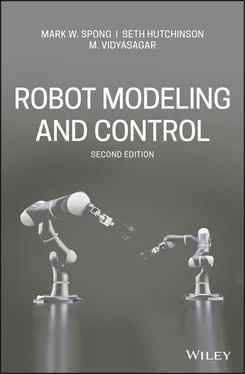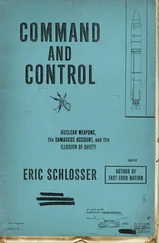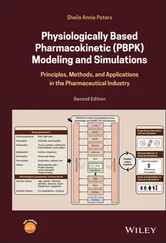7 Part IV Control of Underactuated Systems Chapter 13 Underactuated Robots 13.1 Introduction 13.2 Modeling 13.3 Examples of Underactuated Robots 13.4 Equilibria and Linear Controllability 13.5 Partial Feedback Linearization 13.6 Output Feedback Linearization 13.7 Passivity-Based Control 13.8 Chapter Summary Problems Notes and References Note Chapter 14 Mobile Robots 14.1 Nonholonomic Constraints 14.2 Involutivity and Holonomy 14.3 Examples of Nonholonomic Systems 14.4 Dynamic Extension 14.5 Controllability of Driftless Systems 14.6 Motion Planning 14.7 Feedback Control of Driftless Systems 14.8 Chapter Summary Problems Notes and References Note
8 Appendix A Trigonometry A.1 The Two-Argument Arctangent Function A.2 Useful Trigonometric Formulas
9 Appendix B Linear Algebra B.1 Vectors B.2 Inner Product Spaces B.3 Matrices B.4 Eigenvalues and Eigenvectors B.5 Differentiation of Vectors B.6 The Matrix Exponential B.7 Lie Groups and Lie Algebras B.8 Matrix Pseudoinverse B.9 Schur Complement B.10 Singular Value Decomposition (SVD)
10 Appendix C Lyapunov Stability C.1 Continuity and Differentiability C.2 Vector Fields and Equilibria C.3 Lyapunov Functions C.4 Stability Criteria C.5 Global and Exponential Stability C.6 Stability of Linear Systems C.7 LaSalle’s Theorem C.8 Barbalat’s Lemma
11 Appendix D Optimization D.1 Unconstrained Optimization D.2 Constrained Optimization
12 Appendix E Camera Calibration E.1 The Image Plane and the Sensor Array E.2 Extrinsic Camera Parameters E.3 Intrinsic Camera Parameters E.4 Determining the Camera Parameters Note
13 Bibliography
14 Index
15 End User License Agreement
1 Chapter 3 Table 3.1 Table 3.2 Table 3.3Table 3.4Table 3.5
2 Chapter 5Table 5.1
3 Chapter 7Table 7.1
4 Chapter 8Table 8.1
5 Chapter 13Table 13.1
6 Chapter 14Table 14.1
1 Chapter 1 Figure 1.1 A six-axis industrial manipulator, the KUKA 500 FORTEC robot. (Photo courtesy o... Figure 1.2 Estimated number of industrial robots worldwide 2014–2020. The industrial robot... Figure 1.3 Example of a typical mobile robot, the Fetch series. The figure on the right sh... Figure 1.4 Symbolic representation of robot joints. Each joint allows a single degree of f... Figure 1.5 The Kinova ®Gen3 Ultra lightweight arm, a 7-degree-of-freedom redundant manip... Figure 1.6 The integration of a mechanical arm, sensing, computation, user interface and t... Figure 1.7 Linear vs. rotational link motion showing that a smaller revolute joint can cov... Figure 1.8 The spherical wrist. The axes of rotation of the spherical wrist are typically ... Figure 1.9 A two-finger gripper. (Photo courtesy of Robotiq, Inc.) Figure 1.10 Anthropomorphic hand developed by Barrett Technologies. Such grippers allow for... Figure 1.11 Symbolic representation of an RRR manipulator (left), and the KUKA 500 arm (rig... Figure 1.12 Workspace of the elbow manipulator. The elbow manipulator provides a larger wor... Figure 1.13 Schematic representation of an RRP manipulator, referred to as a spherical robo... Figure 1.14 The ABB IRB910SC SCARA robot (left) and the symbolic representation showing a p... Figure 1.15 The ST Robotics R19 cylindrical robot (left) and the symbolic representation sh... Figure 1.16 The Yamaha YK-XC Cartesian robot (left) and the symbolic representation showing... Figure 1.17 The ABB IRB360 parallel robot. Parallel robots generally have higher structural... Figure 1.18 Two-link planar robot example. Each chapter of the text discusses a fundamental... Figure 1.19 Coordinate frames attached to the links of a two-link planar robot. Each coordi... Figure 1.20 A singular configuration results when the elbow is straight. In this configurat... Figure 1.21 The two-link elbow robot has two solutions to the inverse kinematics except at ... Figure 1.22 Solving for the joint angles of a two-link planar arm. Figure 1.23 Basic structure of a feedback control system. The compensator measures the erro... Figure 1.24 Diagram for Problem 1–12, 1–13, and 1–14.
2 Chapter 2 Figure 2.1 Two coordinate frames, a point p , and two vectors v 1and v 2. Figure 2.2 Coordinate frame o 1 x 1 y 1is oriented at an angle θ with respect to ... Figure 2.3 Rotation about z 0by an angle θ. Figure 2.4 Defining the relative orientation of two frames. Figure 2.5 Coordinate frame attached to a rigid body. Figure 2.6 The block in (b) is obtained by rotating the block in (a) by π about z 0. Figure 2.7 Rotating a vector about axis y 0. Figure 2.8 Composition of rotations about current axes. Figure 2.9 Composition of rotations about fixed axes. Figure 2.10 Euler angle representation. Figure 2.11 Roll, pitch, and yaw angles. Figure 2.12 Rotation about an arbitrary axis. Figure 2.13 Diagram for Problem 2–37. Figure 2.14 Diagram for Problem 2–38.
3 Chapter 3 Figure 3.1 Coordinate frames attached to elbow manipulator. Figure 3.2 Coordinate frames satisfying assumptions DH1 and DH2. Figure 3.3 Positive sense for α iand θ i. Figure 3.4 Denavit–Hartenberg frame assignment. Figure 3.5 Tool frame assignment. Figure 3.6 Two-link planar manipulator. The z -axes all point out of the page, and are n... Figure 3.7 Three-link cylindrical manipulator. Figure 3.8 The spherical wrist frame assignment. Figure 3.9 Cylindrical robot with spherical wrist. Figure 3.10 DH coordinate frame assignment for the Stanford manipulator.Figure 3.11 DH coordinate frame assignment for the SCARA manipulator.Figure 3.12 Three-link planar arm of Problem 3–1.Figure 3.13 Two-link Cartesian robot of Problem 3–2.Figure 3.14 Two-link planar arm of Problem 3–3.Figure 3.15 Three-link planar arm with prismatic joint of Problem 3–4.Figure 3.16 Three-link articulated robot.Figure 3.17 Three-link Cartesian robot.Figure 3.18 Elbow manipulator with spherical wrist.Figure 3.19 Cartesian manipulator with spherical wrist.Figure 3.20 PUMA 260 manipulator.
4 Chapter 4Figure 4.1 Motion of the end effector due to prismatic joint i .Figure 4.2 Motion of the end effector due to revolute joint i .Figure 4.3 Finding the velocity of link 2 of a 3-link planar robot.Figure 4.4 Spherical wrist singularity.Figure 4.5 Elbow manipulator.Figure 4.6 Elbow singularities of the elbow manipulator.Figure 4.7 Singularity of the elbow manipulator with no offsets.Figure 4.8 Elbow manipulator with an offset at the elbow.Figure 4.9 Singularity of spherical manipulator with no offsets.Figure 4.10 SCARA manipulator singularity.Figure 4.11 Two-link planar robot.Figure 4.12 Manipulability ellipsoids are shown for several configurations of the two-link ...
5 Chapter 5Figure 5.1 Kinematic decoupling in the case of a spherical wrist. The vector oc is the...Figure 5.2 First three joints of a spherical manipulator.Figure 5.3 Singular configuration for a spherical manipulator in which the wrist center li...Figure 5.4 First three joints of an elbow manipulator.Figure 5.5 Singular configuration for an elbow manipulator in which the wrist center lies ...Figure 5.6 Elbow manipulator with shoulder offset.Figure 5.7 Left arm (left) and right arm (right) configurations for an elbow manipulator w...Figure 5.8 Projecting onto the plane formed by links 2 and 3.Figure 5.9 Four solutions of the inverse position kinematics for the PUMA manipulator.Figure 5.10 First three joints of a SCARA manipulator.Figure 5.11 Inverse kinematics solution using the Jacobian inverse. Desired end-effector co...Figure 5.12 Inverse kinematics solution using the Jacobian transpose. Desired end-effector ...Figure 5.13 Three-link planar robot with revolute joints.Figure 5.14 Three-link planar robot with prismatic joint.Figure 5.15 Cylindrical configuration.Figure 5.16 Cartesian configuration.
Читать дальше












